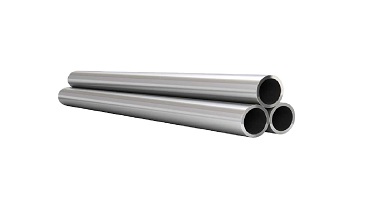Seamless Pipe
Seamless Pipe:
Supply Range of Diameters: 1/2” to 26”
Range of Thickness: SCH 10 to SCH 160
Ends Type: Beveled ends, Plain ends
Range of length: 6000mm, 12000mm
API 5L Seamless steel pipe in various grades and sizes. From Grade B, X42, X46, X60, X65, to Grade X70.
NACE MR 0175/ISO 15156 pipe material stock available.
Standards for Seamless Pipe:
The ASME B36.10 and B36.19 specifications cover the dimensions and weights of seamless pipes for the petrochemical industry (the specs apply to welded pipes too):
- The ASME B36.10 specification covers carbon and low-alloy seamless pipes sizes (dimensions and weights) between 1/8 and 24 inches
- The ASME B36.19 specification, instead, covers the dimensions and weights of stainless steel, duplex, nickel-alloy seamless and welded pipes
- API 5L for oil and gas transmission pipeline
- DIN 2448 for seamless pipe which covers other DIN standards siuch as DIN17175 and DIN 1629
Commercial seamless pipes are designated with a nominal pipe size (representing the approximate fluid conveyance capacity of the pipe) and with a “schedule”, which refers to the thickness of the pipe (the most common are schedule 40, STD, XS, XXS for carbon/alloy pipes, and 10S, 40S and 80S for stainless and nickel alloy pipes).


share
- Description
- Comments
SEAMLESS PIPE PROS AND CONS
Seamless pipes are manufactured out of a solid block of steel and do not have any weld seam, which may represent a weak area (subject to corrosion, erosion and, general failure)
Seamless pipes have more predictable and precise shapes, in terms of roundness and ovality, compared to welded pipes.
The main disadvantage of seamless pipes is that their cost per ton is higher than the cost of ERW pipes of the same size and grade (Seamless vs ERW pipe compete in the range 2 to 20 inches)
Delivery times may be longer, as there are fewer manufacturers of seamless pipes than welded pipes (lower entry barriers exists for welded pipes vs. seamless pipes)
Seamless pipes may have an inconsistent wall thickness across their length, indeed the general tolerance is +/- 12.5%

